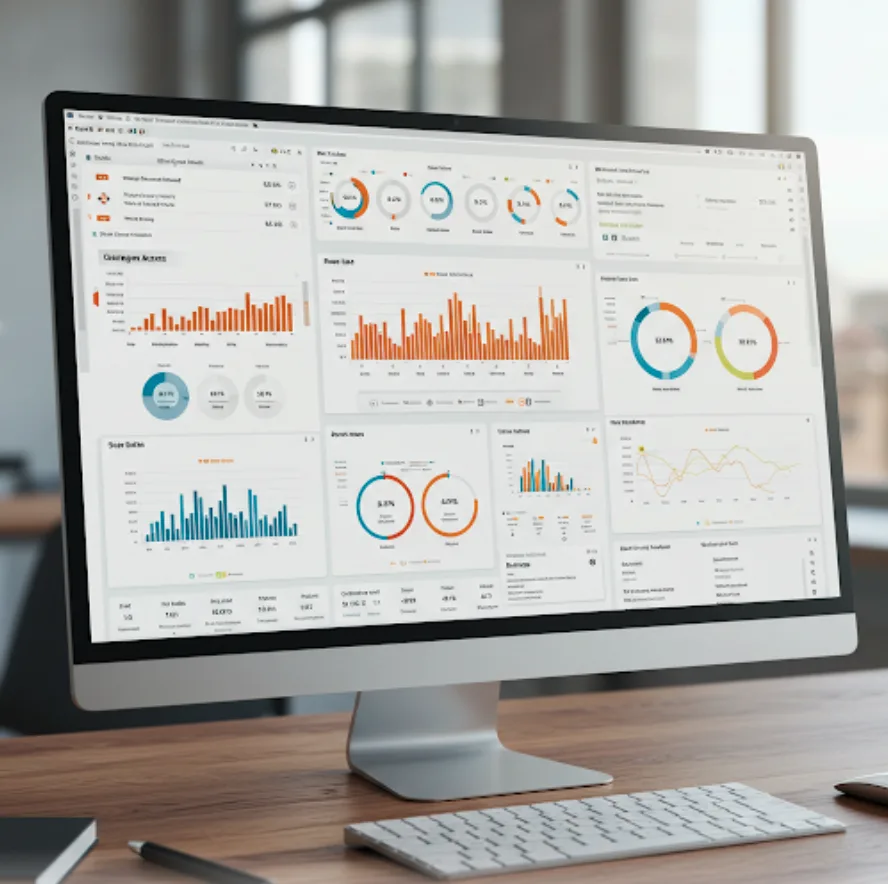In the dynamic realm of B2B sales, the integration of automated data reporting has emerged as a game-changer. By automating the collection, analysis, and presentation of sales data, businesses can reduce errors, improve efficiency, and gain real-time insights that drive growth. This article delves into the transformative power of automated reporting and its role in optimizing B2B sales strategies.
Challenges of Manual Reporting
Traditional reporting methods often involve time-consuming processes that hinder productivity and decision-making. Key challenges include:
Traditional reporting methods often involve time-consuming processes that hinder productivity and decision-making. Key challenges include:
- Inconsistent Data: Manual processes are prone to discrepancies due to data coming from multiple, unintegrated sources.
- Delayed Insights: By the time manual reports are generated, the data may already be outdated, reducing its relevance.
- Resource Drains: Teams spend valuable time on administrative tasks rather than focusing on strategic goals.
These inefficiencies not only impact sales performance but also limit an organization’s ability to respond swiftly to market changes.
The Benefits of Automation in Data Reporting
Automated reporting systems streamline data collection, processing, and distribution, offering several tangible benefits:
1. Real-Time Insights for Informed Decisions
Automated systems provide sales teams with up-to-date data, enabling proactive responses to market trends and customer behavior. For instance, if engagement from a key client declines, the sales team can address the issue immediately. According to McKinsey Global Institute:
- Data-driven organizations are 23 times more likely to acquire new customers.
- They are six times more likely to retain customers and 19 times more likely to be profitable.
Companies utilizing data-driven sales-growth strategies report EBITDA increases between 15% to 25%, says Mckinsey Global Institute.
2. Enhanced Accuracy and Consistency
By pulling data directly from reliable sources, automated reporting minimizes human error and ensures consistency. This allows leaders to make decisions with confidence. For example, during a product launch, automation provides precise metrics on customer feedback and sales performance, avoiding costly errors caused by manual data entry.
3. Boosted Productivity and Efficiency
Automation eliminates repetitive tasks, freeing up resources for higher-value activities. Research from Gartner indicates that automation can save up to 25,000 hours of avoidable work annually. This translates to significant cost savings and more efficient allocation of resources.
4. Improved Partner Management
Partner data reporting automation offers valuable analytics to optimize relationships. Businesses can:
- Identify high-performing partners and replicate their success.
- Allocate resources effectively based on partner performance.
- Use predictive analytics to anticipate market changes and address potential issues before they escalate.
Such insights foster stronger partnerships and contribute to revenue growth and market agility.
5. Accelerated Sales Cycles
Automated reporting shortens sales cycles by providing accurate data quickly, allowing teams to make faster, more informed decisions. Studies reveal that sales teams using automation tools close 30% more deals and reduce their sales cycle duration by 18%.
Real-World Success Stories
Several companies have demonstrated the transformative impact of automated data reporting:
- 6clicks: By integrating sales operations with a CRM system, 6clicks achieved an 806% growth in operational efficiency, highlighting the value of seamless automation (CMO).
- SkipTheDishes: This food delivery service reduced onboarding times for new restaurant partners by 50% through Salesforce’s automated tools, showcasing the role of automation in scaling operations (CMO).
- LinkedIn: Using an intelligent account prioritization engine, LinkedIn’s sales team increased renewal bookings by 8.08%, emphasizing how automation can enhance decision-making and revenue growth (ARXIV).
Steps to Implement Automated Reporting
To successfully adopt automated data reporting, follow these steps:
- Evaluate Current Processes: Identify tasks that consume significant time and resources.
- Choose the Right Tools: Select automation systems compatible with existing platforms and tailored to business needs.
- Train Stakeholders: Ensure teams and partners understand and can utilize the new tools effectively.
- Monitor and Optimize: Regularly assess the performance of automated systems and make necessary adjustments to maximize efficiency.
Conclusion
Automated data reporting is no longer optional for B2B sales teams striving to stay competitive. By delivering real-time insights, enhancing productivity, and improving accuracy, automation empowers organizations to make smarter decisions and achieve sustainable growth.
As evidenced by real-world success stories, the integration of automation in data reporting drives measurable improvements in sales performance and operational efficiency. Companies that embrace this technology now position themselves as leaders in a rapidly evolving market. Connect with 9bloom today to explore how automated reporting can transform your business.


